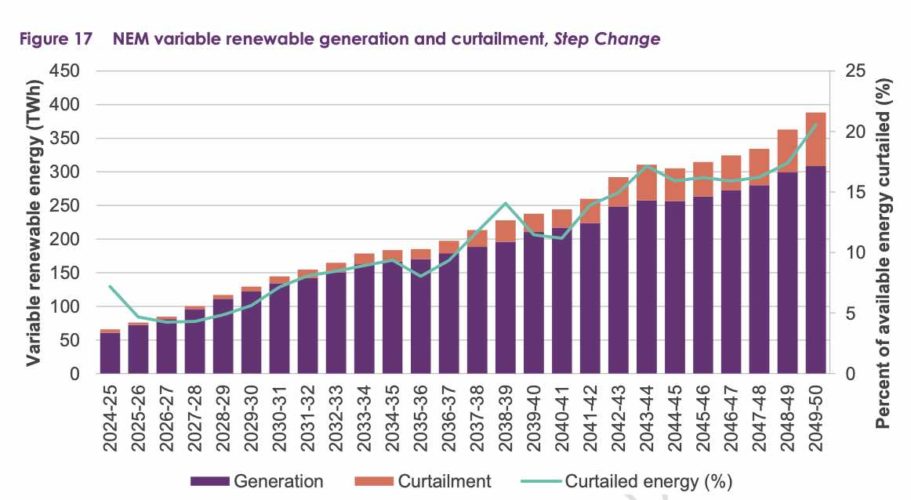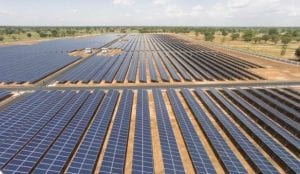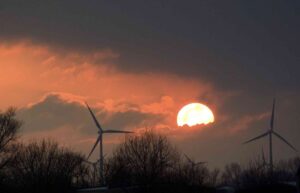Virtual transmission lines (VTL) is an idea that has been kicked around for years, but they could be the urgent, short-term solution to wind and solar curtailment while states wait for new transmission lines to be built, says an expert.
A fast, flexible way to deal with the curtailment, or the deliberate restriction of power supply from renewable energy farms due to a grid that’s too weak or congested to transport the full volume generated, is to use battery energy storage, says Jacobs APAC substations technical director Lara Kruk.
“By connecting batteries in at least two locations we can create… a virtual transmission line. It’s storage as a transmission asset. The first battery is close to the wind generation and when the transmission is at capacity limits, it charges to avoid curtailment,” she said last week at the Wind Industry Summit.
The way it works is by placing a battery on either end of a particularly congested part of the grid. A battery at the supply side can store the excess energy the grid cannot carry. A battery at the demand end of the weak part of the transmission line, which has been charged during periods of low demand, can supply the excess.
It jury-rigs the system to allow all power to be passed on from generators without significant grid upgrades or augmentations taking place — although Kruk says it is not a long-term replacement for those.
Curtailment isn’t going away
The curtailment problem is a problem today, yet major transmission infrastructure, some of which, like the the VNI West link in Victoria, is heavily criticised, is years away from completion.
Wind farm curtailment shot up from 294 gigawatt hours (GWh) in the first quarter of 2020 to 1411 GWh in the second quarter of that year, according to Australian Energy Market Operator (AEMO) data.
All of which could make a significant dent in the amount of power needed from coal-fired generators.
The most recent data, released in January for the fourth quarter of 2022, shows the total utilisation rate of wind, or generated energy as a percentage of availability, dropped to its lowest recent quarterly level of 90 per cent as lower daytime prices in the south caused more wind power to be offloaded from the grid.
Furthermore, wind and solar curtailment could jump from around 4-5 per cent to 20 per cent in a renewables-heavy energy system, according to AEMO’s 2022 Integrated Systems Plan.

Regulators needs to change the rules
Today, a battery-based VTL isn’t possible: there’s no regulatory framework to support using them as a transmission solution while also treating them the same as any other transmission asset, Kruk says.
But a rule change in 2021 to incentivise the better use of connections could pave the way.
The rule change in 2021, which alters how multiple parties connect into a transmission network using the same large dedicated connection asset, could be extended to enable batteries to operate a VTL.
Ideally, however, regulators would allow batteries to operate under a hybrid model where they could earn revenue from multiple services, from arbitrage to frequency ancillary control services (FCAS) to VTL, Kruk says.
“If we allow the stacking of multiple revenues, that is key to improving the business case for storage. Potentially this approach could actually see multiple stakeholders jointly involved in the management of the battery,” she says.
She foresees a transmission network service provider having the rights to the VTL revenue, the generator the rights to FCAS, and so on.
French transmission system operator RTE began trialling this with the project Ringo in 2021.
As an energy utility, RTE isn’t allowed to influence the price of electricity by storing energy during low-price periods and selling high, which means it must be paid for the service of providing a VTL.
The three year pilot of batteries at three locations in Bellac, central France, finishes next year, after which the batteries will be opened up to be used for other services as well including FCAS and grid balancing.










